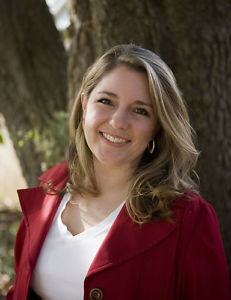The Promise of a Person
Kathryn Williams spins the timeless story of the Grand Duchess Anastasia into a YA mystery
“I’m not sure when I became an imposter,” explains 17-year-old Jess in The Storyteller, the new YA novel by Kathryn Williams. “It wasn’t a conscious decision, more a slow, smooth slide into something that felt, just, easier.” It was easier to play soccer at her mother’s insistence, for example, than to fight for the piano lessons she really wants. And it was easier to pretend to like to ski when handsome, athletic Ryan asked, and to hang out with his popular yet boorish friends, than to reveal that not only does she hate skiing, she’s secretly a bookish introvert who hopes to become a writer someday.
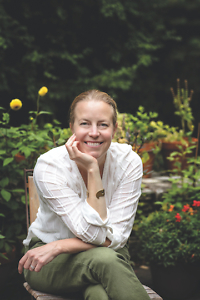
Williams introduces a new aspect to the classic teen identity crisis when Jess is cleaning out the attic of her late aunt’s home and finds an old trunk filled with dozens of diaries written in Russian between 1913 and 1922. Her Craigslist ad for a translator turns up Evan Hermann, a nerdy yet attractive student of Russian language at the local college, who plays the oboe and likes to quote Tolstoy and Dostoevsky. As Evan begins to read the diaries aloud, he and Jess are shocked and excited to realize that the diarist claims to be the Grand Duchess Anastasia, the youngest daughter of Tsar Nicholas II of Russia, who was believed by some to have survived the execution of her family by the Bolsheviks in 1918. And so begins their investigation into whether Jess’ mysterious great-great-aunt Anna could possibly have been the real Russian princess or only one of many imposters.
Williams, who holds an M.F.A. in creative writing from the Sewanee School of Letters, answered questions about The Storyteller by email.
Chapter 16: What inspired you to write a novel about the tragic story of the Romanovs? And why do you think that for more than a century people have wanted so badly to believe that Anastasia survived?
Kathryn Williams: I grew up in Richmond, Virginia, not far from Charlottesville, where the most famous Anastasia impersonator, Anna Anderson, lived for many years, so the Romanov mythology is something I’ve long been aware of and intrigued by.
I do think that’s what the family’s story became — a mythic, modern-day fairy tale. When my publisher was deciding how to market The Storyteller, there was a graphic the marketing team created that said, “What’s your classic book retelling?” and the answers were all fictional (Little Red Riding Hood, Cinderella, etc.), except for Anastasia. At first, I thought it was odd, but then I realized that’s how much the history has become a fiction in people’s minds.
The first half of the 20th century was a time when so many individual lives were devastated by huge, horrific forces, and collectively, we needed narratives to help us make sense of that. The Romanov story was about, “See, even the most powerful individuals were victims of forces beyond their control.” In the West, the story’s grip might also have had to do with anti-Communist sentiment (the Bolsheviks are the villains of this story).
What happened to the family was incredibly gruesome, and it’s hard to wrap your head around that kind of violence to children. The persistent belief that one of them survived is about keeping hope alive that the world is not an entirely cruel place. As to why the myth coalesced around Anastasia in particular, I think there were several reasons, the biggest one probably that that’s who Anderson claimed to be (her motives, we’ll never know). Anastasia was also known to have real pluck. And, without giving spoilers, the forensic discoveries supported her survival over some of the other siblings.
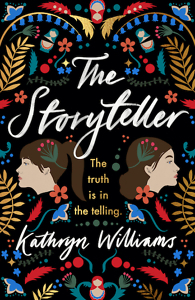 Chapter 16: A central theme of The Storyteller is identity: what it means to be true to oneself and the ways in which we all sometimes mislead others about who we really are. Why did this idea of identity and misrepresentation resonate so strongly with you?
Chapter 16: A central theme of The Storyteller is identity: what it means to be true to oneself and the ways in which we all sometimes mislead others about who we really are. Why did this idea of identity and misrepresentation resonate so strongly with you?
Williams: This is my fourth young adult novel, and I’ve realized that, in the end, every one of them is about my protagonist figuring out who she is, because this is the great work of the teen years. But that work is done against the backdrop of big outside pressures. As a teenager, so many people want to tell you who you are — your family, your teachers, your friends, the media, advertisers. It might be subtle or even well-meaning, couched in possibility — look what you could be if you wanted — but at least for me, I felt a big push-pull in those years, and it was confusing. I never willfully misrepresented myself, and Jess doesn’t either, but there were moments where that tiny little voice inside me was like, “Yeah, that’s not really you.”
Growing up female and upper-middle-class in the South, where presentation was always important, might have had something to do with it. I was acutely aware, even in the days before social media, that people carefully crafted their image, and I often chafed at this because I am a person who literally cannot tell a lie (unless it’s a novel)! These days, I am as blunt and unladylike as I please.
Chapter 16: Another central thread running through the novel is loss, both historical and modern, political and personal. Evan’s father died when he was 4, and to Jess he admits, “I don’t remember him as a person, though, like the sound of his voice or if he was funny or if he played cards, too. Those types of things. He’s more … the shape of a father.” How have losses in your own life given you insight into that kind of pain and enabled you to put it into such lovely and poignant images for your readers?
Williams: There’s the unfortunate cliché that YA authors always kill off a parent, and I’ve been guilty of that. I’m not sure why, except that it immediately raises the stakes by making a character vulnerable. Maybe at a Freudian level, it’s that the teen years are about differentiation and becoming independent, and having a parent die is a very literal way to do that.
I did not experience the kind of loss that Evan or Anna do in the story — I had a very stable childhood and young adulthood — but my mother passed away while I was writing this book, and I think that fresh loss took me deeper into all of my characters’ pain. I also experienced a miscarriage while I was finishing a rewrite of the book, and that was around the time that Evan’s backstory became clear to me. In some ways, that’s what I was also grieving — not a particular person I had come to know, but the promise of a person, the shape of a person I never would know.
Chapter 16: The diarist’s story, much of which is told in her own words, is at the heart of the novel. How did you manage to place yourself so thoroughly into the mindset of a tragic Russian émigré?
Williams: At one point in the book, my protagonist, Jess, has to remind herself that these were real people she’s reading about — people who lived and died and suffered, and that deserves a certain care and respect. I felt that responsibility when creating the character of Anna/Anastasia.
Luckily, there is so much fascination with the Romanovs that there are loads of sources about them — books, articles, movies, blogs, and also primary sources — and many are digitized. So, I read extracts of her (translated) letters, as well as diaries of the other Grand Duchesses (Anastasia’s did not survive and were likely burned before the family was moved to Tobolsk). What that mostly provided me, actually, was the levity — the mundane details of a young woman living at that time. For the hard stuff, the trauma, I guess like a Method actor I had to call on my own darkest times and deepest losses. When I encourage young writers to “write what you know,” this is what I mean — not replicating your own life circumstances for a character but animating them with the root emotions you yourself have experienced. Empathy is one of your greatest craft tools.
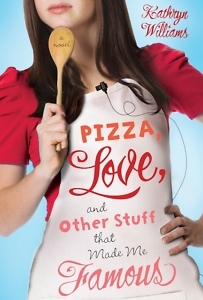 Chapter 16: You describe your Instagram account @thestorycabinet as “Writing prompts for people who find old stuff cool” and even include a few of the same photos of vintage objects on your website, along with a suggested first line to a story inspired by each object. How did you develop your love of antiques and how does contemplating items from the past inspire your own creativity?
Chapter 16: You describe your Instagram account @thestorycabinet as “Writing prompts for people who find old stuff cool” and even include a few of the same photos of vintage objects on your website, along with a suggested first line to a story inspired by each object. How did you develop your love of antiques and how does contemplating items from the past inspire your own creativity?
Williams: Yes! I am trying to offer something through my social media rather than just asking people to buy my books and admire some idealized version of a writer’s life (because that is also a fiction).
In teaching creative writing to youth, I often use objects as a tangible way into a character, setting, or story. In one scene in a vintage shop, my protagonist, Jess, says that “objects, especially old ones, are stories in physical form.” That’s definitely me talking. For whatever reason (maybe I’m an old soul), I’ve always been fascinated by antique stuff. I can spend hours pawing through a vintage or junk shop; it’s not about the value or rarity of something but about imagining who used that object and where and how. As a little kid, I truly expected that one day I would pick up an old object and be transported back in time. Because The Storyteller begins with the discovery of an antique trunk, I decided to focus on vintage objects for my prompts.
Chapter 16: As a history buff, what are some examples of historical fiction that you enjoyed either as a teen or an adult?
Williams: I would hardly call myself a history buff, but I am definitely drawn to realistic fiction set in any time period. As for historical fiction, anything by (Tennessean) Ruta Sepetys is amazing. She is a history buff. I loved Code Name Verity by Elizabeth E. Wein, Girl in the Blue Coat by Monica Hesse, and The Book Thief by Markus Zusak. Euphoria by Lily King and All the Light We Cannot See by Anthony Doerr are two adult titles that continue to resonate for me. They’re not fiction, but as a young reader, I was deeply affected by Night by Elie Wiesel and the Diary of Anne Frank.
Currently, I’m reading Last Night at the Telegraph Club by Malinda Lo and am looking forward to several new YA releases: My Fine Fellow by Jennieke Cohen (I am a food buff, and we shared a pub day); And We Rise, about the civil rights movement, in verse, by Erica Martin; and Daughters of a Dead Empire, another Anastasia-inspired novel by Carolyn Tara O’Neil — I am so curious to see how her story grew out of the same source material.
Chapter 16: Jess wants to be a writer. She says, “I love writing. I feel the urge to write like I feel the urge to breathe or to sleep or to eat. Then why is it so damn hard sometimes to just … put … my butt … in the seat?” Most writers can probably relate to her procrastination and self-doubt. As a leader of writing workshops for teens, how do you inspire them to do the hard work of writing in a world that is — more than ever before — filled with distractions?
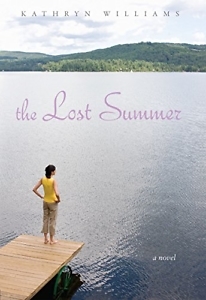 Williams: The main thing is that I don’t try to act like I’ve figured it all out myself. This last book took me almost 10 years, so I can hardly preach about buckling down — then again, this book took me 10 years, and I never gave up on it because I knew it was a story I had to wrestle to the ground, if only for my own growth as a writer.
Williams: The main thing is that I don’t try to act like I’ve figured it all out myself. This last book took me almost 10 years, so I can hardly preach about buckling down — then again, this book took me 10 years, and I never gave up on it because I knew it was a story I had to wrestle to the ground, if only for my own growth as a writer.
Writing is hard, finding time is hard (especially now that I have a toddler!), and the craft is a lifelong study that you will get better at but that you will never fully master. So, when I’m working with youth, we’re in it together.
At The Telling Room (in Maine, where I teach), we start most sessions with something we call “writing into the room.” That means a shared prompt where you just arrive, you turn on the faucet and you write. What you produce might not be good, but you put down whatever else you’ve carried through the day and you enter the mental headspace of the writer’s studio.
I also advocate knowing when you have to fight the urge to flee (a looming deadline, for instance, or a really packed schedule) and when getting up and out might serve you. Writing doesn’t only look like putting pen to paper or pecking away at a keyboard. It might be dreaming about the character as you ride the bus or listening to music from the time of your setting or puzzling through some plot challenge as you take a walk. I do a lot of “writing” in my head and in my Notes app.
The toughest thing can be not jumping ship when the story gets tough — you lose your thread, realize your character is totally flat, or know what points A, B, C, and Z are but no idea how to get from C to Z. I’ve known really talented young writers who have started six novels but never finished one. I just tell them they’ve got to pick one, they’ve got to see it through to learn. Usually, if you give them the space and encouragement, they can do it. Deadlines help.

Tina Chambers has worked as a technical editor at an engineering firm and as an editorial assistant at Peachtree Publishers, where she worked on books by Erskine Caldwell, Will Campbell, and Ferrol Sams, to name a few. She lives in Chattanooga.




